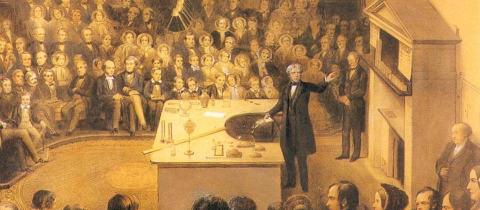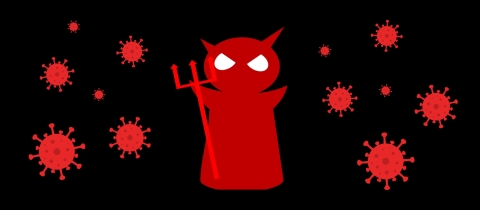An idiot is dumber than an imbecile, who is dumber than a moron. The word “moron” was first derived from the Greek in 1910 to identify individuals with an IQ score between 51 and 70. It may sound funny today, but it heralded the eugenics movement, which was anything but hilarious.
Science is the most predictive tool we have to understand the world around us but, sometimes, this tool can get bent. Dr. Paul Offit—medical doctor, pro-vaccination activist, and author—takes us through seven stories of the world’s worst inventions in his latest tome, Pandora’s Lab.
Offit accompanies us on a crash course through the history of humankind’s fascination with opium and the pain-relieving molecules it contains. We learn about the invention of the hypodermic needle, as well as the Frankensteinian experiments of Friedrich Sertürner, who isolated morphine and tried it on himself, only to become hopelessly addicted to it. His warnings, and those of many along the way, were ignored as opium was replaced by morphine then by heroin, itself displaced by oxycodone. Scientists’ attempts at disentangling the pain-relieving quality of opium from its addictive properties have led to such horrifying sounding suggestions as sending free heroin to morphine addicts! It would seem that, for now, “God’s own medicine” comes with both a gift and a curse. Offit concludes the chapter by reminding the scientific community that clinical recommendations, such as those to prescribe painkillers, must be built on extensive data, as anecdotes are partly to blame for medicine’s rapid embrace of opioids.
Another story of how the science cookie sometimes crumbles involves actual cookies crumbling because one of their time-honoured ingredients was banned. If I asked you if fat is good for your health or not, you might give me a confused look. Not only have there been conflicting reports in the media over the decades, but policies have amplified the message of preliminary data which turned out to be wrong. Margarine was seen as saving Americans from the dangers of animal fats… until the trans fats it contained due to the partial hydrogenation process were revealed to be a greater enemy. Offit gives the reader a crisp, easily digestible lesson in fat chemistry that takes often-heard terms like “polyunsaturated fats” and puts them into a clear context. The lesson here is that not all fats are created equal, and jumping the gun on policymaking can have dire consequences.
Given my academic background, the chapter I found particularly disturbing was “America’s Master Race”. It is a Dantesque odyssey from Galton’s seemingly innocent “couldn’t we breed better people?” all the way to the atrocities of Joseph Mengele. The story of the eugenics movement is particularly shameful and it has not lost its relevance. Offit reports that, in the 1910s, Charles Davenport and Harry Laughlin published a list of people whose reproductive rights had to be curbed to improve the American race. These were “the feebleminded; the poor; alcoholics; criminals; epileptics; the insane; the constitutionally weak; those suffering from venereal diseases; the deformed; and the deaf, blind, or mute”. Forced sterilizations followed, until Adolf Hitler took this concept one step further with dehumanizing experiments and genocide. What stayed with me, beyond Offit’s raw, clinical descriptions of Mengele’s “research”, was the support for the eugenics movement. Alexander Graham Bell put together a form for the U.S. Eugenics Research Office to document deafness. George Bernard Shaw, Theodore Roosevelt, and most American clergy were all fond of the movement as well. Reminding us that the human mind can work in unreasonable ways, Offit mentions Marcus Garvey, an African-American who was opposed to interracial marriage and wanted his own race to be deported back to Africa in the ultimate act of segregation. These fashionable ideas of race superiority were justified using early genetic and intelligence data. Offit warns that, when the evidence fits a person’s preconceived notions, it is easy to accept it, stretch it, and plaster it all over to justify morally objectionable actions.
Throughout Pandora’s Lab, Offit proves to be an efficient storyteller, using hooks and historical facts to propel the narrative forward without ever losing the reader in overly flowery language. Pandora’s Lab is a clear and compelling criticism of decision-making based on bad science. We can only hope that stakeholders in science policy draw important lessons from it, but it would be prudent to remember that, while history does not repeat itself, it does often rhyme.
-----







